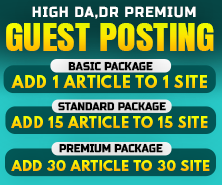Software demos are a vital component of the sales and onboarding process in the tech industry, serving as a practical and engaging way to demonstrate a software product’s capabilities, interface, and real-world value to potential Software Demos users. Unlike marketing materials that focus on theoretical benefits, software demos provide a hands-on look at how the software works, allowing prospects to see key features, workflows, and problem-solving functionality in action. These demonstrations can be conducted live by a sales representative, recorded as video walkthroughs, or built as interactive self-guided experiences that users can explore at their own pace. Regardless of the format, the goal of a software demo is to translate abstract features into concrete outcomes that are relevant to the specific needs of the prospect. A well-executed software demo does more than just list functions; it tells a story about how the software can solve a customer’s problems, improve efficiency, and deliver measurable results. This storytelling approach, especially when tailored to the prospect’s industry or use case, builds trust and interest far more effectively than a static brochure or data sheet ever could. For B2B SaaS companies, software demos are often a pivotal moment in the sales funnel, helping move leads from consideration to decision. By showcasing a personalized view of how the software fits into the customer’s environment—such as integrating with existing tools, automating specific tasks, or aligning with key KPIs—demos can drastically increase conversion rates. In today’s competitive software market, the quality of a demo can even be the deciding factor between choosing one solution over another. With advancements in digital tools, companies now offer demos via screen-sharing platforms like Zoom or Teams, video platforms like Loom or Vimeo, and interactive platforms such as Walnut, Reprise, or Storylane, which let users click through a simulated version of the software themselves. These options provide flexibility in how demos are delivered, whether it’s a one-on-one live session, a recorded overview sent via email, or an on-demand interactive experience embedded on a website. Moreover, software demos also play a key role post-sale, particularly in customer onboarding and training. By guiding users through the software’s interface and functionalities, demos reduce the learning curve and help drive early adoption and long-term satisfaction. A demo that focuses too heavily on technical details, however, can lose the audience; effective demos should instead be concise, user-focused, and oriented around solving specific problems. Presenters should highlight the most relevant features, address pain points, and answer common questions, ideally while engaging the audience through conversation or interactivity. Data shows that prospects who view a tailored software demo are significantly more likely to convert, with increased trust and clarity about how the product meets their needs. As software buyers become more self-educated and value-driven, offering intuitive, benefit-led demos is no longer optional—it’s essential. In short, software demos are not just a sales tool—they are a strategic experience that connects the promise of the product to the customer’s real-world goals, paving the way for stronger relationships and sustained success.




